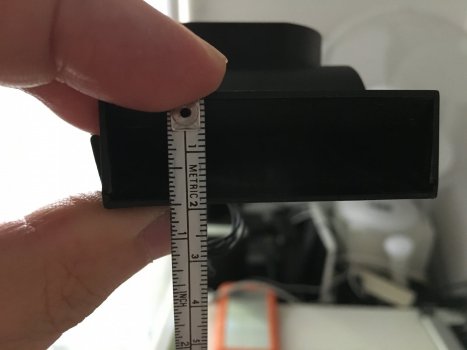Hi everyone! I've been reading through the thread for the last month or so after acquiring an iMac, ordering my parts and then waiting for them in the post.
My configuration is as follows:
| From Apple: | After Upgrades: |
| 2010 27" iMac | 2010 27" iMac |
| i5 680 - Dual Core 3.6GHz | i7 870 - Quad Core 2.93 |
| 8GB DDR3 1333 | 32GB DDR3 1333 |
| AMD Radeon HD 5750 1GB | Quadro K3100M 4GB |
| 2TB 7200rpm HDD + Optical Drive | No HDD + Optical drive replaced with SSD |
I got the iMac around a month and a half ago and have slowly been doing upgrades as the parts come in, first was the CPU which was my first real dive into the iMac, but was relatively painless, installed and all went well on the first try. Later the RAM came which was obviously pretty painless with the RAM door on the machine, and then the SSD arrived, pulled out the optical drive and installed it (and then installed a fresh copy of High Sierra to the drive) and again relatively simplistic.
However, today I received my K3100M which is where I'm having a bit of trouble. I installed the card which again was relatively pain free (aside from the bloody temperature cable, took the graphics card out without having to remove the logic board, but had to loosen it up a bit in the end so that I could clip the temp cable in correctly..). I then used the bootable USB provided by xanderon which worked like a charm, iMac booted right in, got IP address and was able to get in and flash the card, no issues! I then rebooted and removed the USB, attached the SSD back and booted one more time (without the screen on) and sure enough my iMac showed up again in my router (this time with the correct name, meaning it'd successfully booted into macOS), perfect! I attached the screen back (didn't plug the display sync cable in correctly the first time and gave myself a bit of a fright, but fixed that) and pressed the power button, and sure enough I get a chime and the Apple logo, then the loading bar and all is well, but then the bar finishes, the screen turns white for a few seconds, and then turns black (backlight still lit), and it stays this way until I turn the computer back off.
I was stumped, but then I thought about it and I hadn't reset the NVRAM/PRAM or SMC, so did both of those, and sure enough on reboot I get the Apple Logo and all is well, but the same issue happens, boots all the way through and then goes white, then black and stays that way. I figured that maybe the GPU was making contact where it shouldn't have, or was overheating or SOMETHING, and so I thought okay lets boot into the USB from xanderon again, and see if I get a display output, sure enough the boot picker works fine, and Linux boots up just fine and I'm in the command line, I left it for 5-10 minutes and come back and it's still there totally fine.
I then thought I'd isolated the issue down to being my macOS install because the USB works fine, so I make a Catalina USB (with the dosDude patcher, disabled auto install patches) on my 16" Pro, and plugged it into the iMac, entered the boot picker and there it was, booted into the USB and sure enough the same thing happened gets all the way to the end, and then goes white, and black and stays black until a reboot. Tried macOS recovery and the same thing, black until a reboot. But sure enough the Linux USB still works fine. I also have tried option booting and then selecting the macOS install directly from the boot picker and that has the same result, white, then black (backlit) and nothing.
I've had a decent skim over the thread, and know that there is an issue with a black screen unless you install a kext, which occurs after changing something with the PRAM and you need to do a PRAM reset or option boot to get it to work, but I've tried both of these things and it doesn't work.
Hoping someone has an idea as to what the issue I've got here is and can point me in the right direction!



